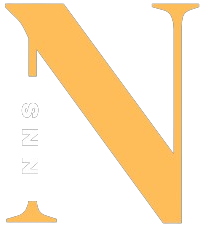ENGINEERING PHYSICS 21PHY12/22
| 21PHY12/ 21PHY22 VTU Notes |
| Course Code | 21PHY12/22 |
|---|---|
| CIE Marks | 50 |
| Teaching Hours | 2 Lecture, 2 Tutorial, 0 Practical, 1 Self-study |
| SEE Marks | 50 |
| Total Pedagogy Hours | 40 |
| Total Marks | 100 |
| Credits | 03 |
| Exam Hours | 03 Hours |
2021 Scheme ENGINEERING PHYSICS 21PHY12/22 Notes (Download👇)
21PHY12/ 21PHY22 SYLLABUS
MODULE 1
Oscillations and Waves
Free Oscillations: Basics of SHM, derivation of differential equation for SHM, Mechanical simple harmonic oscillators (spring constant by series and parallel combination), Equation of motion for free oscillations, Natural frequency of oscillations.
Damped Oscillations: Theory of damped oscillations (derivation), over damping, critical & under damping (only graphical representation), quality factor.
ForcedOscillations: Theory of forced oscillations (derivation) and resonance, sharpness of resonance.
Shock waves: Mach number, Properties of Shock waves, Construction and working of Reddy shock tube, applications of shock waves, Numerical problems.
| Practical Topics | Self-study Component |
|---|---|
| Spring in series and parallel combination | Basics of Simple Harmonic Motion (SHM) |
MODULE 2
Modern Physics & Quantum Mechanics
Introduction to blackbody radiation spectrum- Wien’s law, Rayleigh Jean’s law, Stefan -Boltzmann law and Planck’s law (qualitative), Deduction of Wien’s law and Rayleigh Jeans law from Planck’s law. Wave-Particle dualism, de-Broglie hypothesis, de-Broglie wavelength. Heisenberg’s uncertainty principle and its physical significance, Application of uncertainty principle-Non-existence of electron in the nucleus (relativistic case), Wave function- Properties, Physical significance, Probability density, Normalization, Eigen values and Eigen functions. Time independent Schrödinger wave equation. Particle in a box- Energy Eigen values and probability densities, Numerical problems.
| Practical Topics | Self-study Component |
|---|---|
| Verification of Stefan’s Law | Wave-Particle Dualism, de-Broglie Hypothesis, de-Broglie Wavelength |
MODULE 3
Lasers & Optical Fibers
08 Hours Lasers: Interaction of radiation with matter, Einstein’s coefficients (derivation of expression for energy density). Requisites of a Laser system. Conditions for Laser action. Principle, Construction and working of CO2 and semiconductor Lasers. Application of Lasers in Defence (Laser range finder) and medical applications- Eye surgery and skin treatment. Optical Fibers: Propagation mechanism, angle of acceptance, Numerical aperture, Modes of propagation, Types of optical fibers, Attenuation and Mention of expression for attenuation coefficient. Discussion of block diagram of point to point communication, Optical fiber sensors- Intensity based displacement sensor and Temperature sensor based on phase modulation, Merits and demerits, Numerical problems.
| Practical Topics | Self-study Component |
|---|---|
| Wavelength of LASER source | Properties of Laser and Comparison with Ordinary Source |
| Optical Fiber |
MODULE 4
Electrical Conductivity in Solids
Classical free electron theory: Drude- Lorentz theory & Assumptions, Expression for electrical conductivity (no derivation), Failures of classical free-electron theory.
Quantum free electron theory: Assumptions, Density of states (no derivation), Fermi-energy, Fermi factor & its temperature dependence, Fermi – Dirac Statistics, Expression for electrical conductivity (derivation), Merits of Quantum free electron theory.
Physics of Semiconductors: Fermi level in intrinsic semiconductors, Expression for concentration of electrons in conduction band, Holes concentration in valance band (only mention the expression), Conductivity of semiconductors (derivation), Hall effect, Expression for Hall coefficient (derivation).
Dielectrics: Electric dipole, Dipole moment, Polarization of dielectric materials, Types of polarizations. Qualitative treatment of Internal field in solids for one dimensional infinite array of dipoles (Lorentz field). Claussius-Mossotti equation (derivation), Numerical problems.
| Practical Topics | Self-study Component |
|---|---|
| Fermi Energy of a material | Electric dipole, Dipole moment, Polarization of dielectric materials |
| Resistivity of a material |
MODULE 5
Material Characterization Techniques and Instrumentation
08 Hours Introduction to materials: Nanomaterials and nanocomposites. Principle, construction and working of X-ray Diffractometer, crystal size determination by Scherrer equation. Principle, construction, working and applications of -Atomic Force Microscope (AFM), X-ray Photoelectron Spectroscope (XPS), Scanning Electron Microscope (SEM), Transmission Electron Microscope (TEM) Numerical problems
| Practical Topics | Self-study Component |
|---|---|
| X-ray diffractometer | Understanding X-ray Diffraction |
ENGINEERING PHYSICS LABORATORY MANUAL
Text Books
| Text Books |
|---|
| 1. A Textbook of Engineering Physics by M.N. Avadhanulu and P.G. Kshirsagar, 10th Revised Edition, S. Chand & Company Ltd, New Delhi. |
| 2. An Introduction to Laser Theory and Applications by M.N. Avadhanulu and P.S. Hemne, Revised Edition 2012, S. Chand and Company Ltd, New Delhi. |
| 3. Engineering Physics by Gaur and Gupta, Dhanpat Rai Publications, 2017. |
| 4. Concepts of Modern Physics by Arthur Beiser, 6th Edition, Tata McGraw Hill Education Pvt Ltd, New Delhi, 2006. |
| 5. X-ray Diffraction by B.E. Warren, published by Courier Corporation. |
| 6. Nano Composite Materials: Synthesis, Properties, and Applications by J. Parameswaranpillai, N. Hameed, T. Kurian, Y. Yu, CRC Press. |
| 7. Fundamentals of Fibre Optics in Telecommunication & Sensor Systems by B.P. Pal, New Age International Publishers. |
Reference Books
| Reference Books |
|---|
| 1. Introduction to Mechanics by M.K. Verma, 2nd Edition, University Press (India) Pvt Ltd, Hyderabad, 2009. |
| 2. Lasers and Nonlinear Optics by B.B. Laud, 3rd Edition, New Age International Publishers, 2011. |
| 3. LASERS: Principles, Types, and Applications by K.R. Nambiar, New Age International Publishers. |
| 4. Solid State Physics by S.O. Pillai, 8th Edition, New Age International Publishers, 2018. |
| 5. Shock Waves Made Simple by Chintoo S Kumar, K. Takayama, and KPJ Reddy, Willey India Pvt. Ltd., New Delhi, 2014. |
| 6. Materials Characterization Techniques by Sam Zhang, Lin Li, Ashok Kumar, CRC Press, First Edition, 2008. |
| 7. Characterization of Materials by Mitra P.K., Prentice Hall India Learning Private Limited. |
| 8. Nanoscience and Nanotechnology: Fundamentals to Frontiers by M.S. Ramachandra Rao & Shubra Singh, Wiley India Pvt Ltd. |
